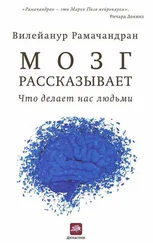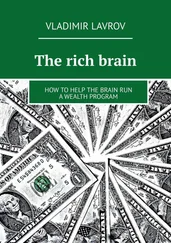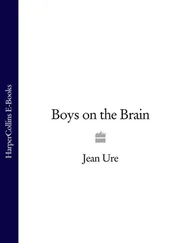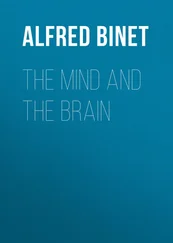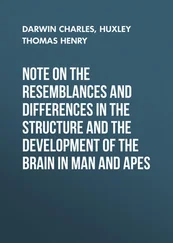•
But before we begin, I think it’s important for you to understand my personal approach to science and why I am drawn to curious cases. When I give talks to lay audiences around the country, one question comes up again and again: “When are you brain scientists ever going to come up with a unified theory for how the mind works? There’s Einstein’s general theory of relativity and Newton’s universal law of gravitation in physics. Why not one for the brain?”
My answer is that we are not yet at the stage where we can formulate grand unified theories of mind and brain. Every science has to go through an initial “experiment” or phenomena-driven stage — in which its practitioners are still discovering the basic laws — before it reaches a more sophisticated theory-driven stage.
Consider the evolution of ideas about electricity and magnetism. Although people had vague notions about lodestones and magnets for centuries and used them both for making compasses, the Victorian physicist Michael Faraday was the first to study magnets systematically. He did two very simple experiments with astonishing results. In one experiment — which any schoolchild can repeat — he simply placed a bar magnet behind a sheet of paper, sprinkled powdered iron filings on the surface of the paper and found that they spontaneously aligned themselves along the magnetic lines of force (this was the very first time anyone had demonstrated the existence of fields in physics). In the second experiment, Faraday moved a bar magnet to and fro in the center of a coil of wire, and, lo and behold, this action produced an electrical current in the wire.
These informal demonstrations — and this book is full of examples of this sort — had deep implications 1 : They linked magnetism and electricity for the first time. Faraday’s own interpretation of these effects remained qualitative, but his experiments set the stage for James Clerk Maxwell’s famous electromagnetic wave equations several decades later — the mathematical formalisms that form the basis of all modern physics.
My point is simply that neuroscience today is in the Faraday stage, not in the Maxwell stage, and there is no point in trying to jump ahead. I would love to be proved wrong, of course, and there is certainly no harm in trying to construct formal theories about the brain, even if one fails (and there is no shortage of people who are trying). But for me, the best research strategy might be characterized as “tinkering”. Whenever I use this word, many people look rather shocked, as if one couldn’t possibly do sophisticated science by just playing around with ideas and without an overarching theory to guide one’s hunches. But that’s exactly what I mean (although these hunches are far from random; they are always guided by intuition).
I’ve been interested in science as long as I can remember. When I was eight or nine years old, I started collecting fossils and seashells, becoming obsessed with taxonomy and evolution. A little later I set up a small chemistry lab under the stairway in our house and enjoyed watching iron filings “fizz” in hydrochloric acid and listening to the hydrogen “pop” when I set fire to it. (The iron displaced the hydrogen from the hydrochloric acid to form iron chloride and hydrogen.) The idea that you could learn so much from a simple experiment and that everything in the universe is based on such interactions was fascinating. I remember that when a teacher told me about Faraday’s simple experiments, I was intrigued by the notion that you could accomplish so much with so little. These experiences left me with a permanent distaste for fancy equipment and the realization that you don’t necessarily need complicated machines to generate scientific revolutions; all you need are some good hunches. 2
Another perverse streak of mine is that I’ve always been drawn to the exception rather than to the rule in every science that I’ve studied. In high school I wondered why iodine is the only element that turns from a solid to a vapor direcdy when heated, without first melting and going through a liquid stage. Why does Saturn have rings and not the other planets? Why does water alone expand when it turns to ice, whereas every other liquid shrinks when it solidifies? Why do some animals not have sex? Why can tadpoles regenerate lost limbs though an adult frog cannot? Is it because the tadpole is younger, or is it because it’s a tadpole? What would happen if you delayed metamorphosis by blocking the action of thyroid hormones (you could put a few drops of thiouracil into the aquarium) so that you ended up with a very old tadpole? Would the geriatric tadpole be able to regenerate a missing limb? (As a schoolboy I made some feeble attempts to answer this, but, to my knowledge, we don’t know the answer even to this day.) 3
Of course, looking at such odd cases is not the only way — or even the best way — of doing science; it’s a lot of fun but it’s not everyone’s cup of tea. But it’s an eccentricity that has remained with me since childhood, and fortunately I have been able to turn it into an advantage. Clinical neurology, in particular, is full of such examples that have been ignored by the “establishment” because they don’t really fit received wisdom. I have discovered, to my delight, that many of them are diamonds in the rough.
For example, those who are suspcious of the claims of mind-body medicine should consider multiple personality disorders. Some clinicians say that patients can actually “change” their eye structure when assuming different personas — a nearsighted person becomes farsighted, a blue-eyed person becomes brown-eyed — or that the patient’s blood chemistry changes along with personality (high blood glucose level with one and normal glucose level with another). There are also case descriptions of people’s hair turning white, literally overnight, after a severe psychological shock and of pious nuns’ developing stigmata on their palms in ecstatic union with Jesus. I find it surprising that despite three decades of research, we are not even sure whether these phenomena are real or bogus. Given all the hints that there is something interesting going on, why not examine these claims in greater detail? Are they like alien abduction and spoon bending, or are they genuine anomalies — like X rays or bacterial transformation 4 — that may someday drive paradigm shifts and scientific revolutions?
I was personally drawn into medicine, a discipline full of ambiguities, because its Sherlock Holmes style of inquiry greatly appealed to me. Diagnosing a patient’s problem remains as much an art as a science, calling into play powers of observation, reason and all the human senses. I recall one professor, Dr. K.V. Thiruvengadam, instructing us how to identify disease by just smelling the patient — the unmistakable, sweetish nail polish breath of diabetic ketosis; the freshly baked bread odor of typhoid fever; the stale-beer stench of scrofula; the newly plucked chicken feathers aroma of rubella; the foul smell of a lung abscess; and the ammonialike Windex odor of a patient in liver failure. (And today a pediatrician might add the grape juice smell of Pseudomonas infection in children and the sweaty-feet smell of isovaleric acidemia.) Inspect the fingers carefully, Dr. Thiruvengadam told us, because a small change in the angle between the nail bed and the finger can herald the onset of a malignant lung cancer long before more ominous clinical signs emerge. Remarkably, this telltale sign — clubbing — disappears instantly on the operating table as the surgeon removes the cancer, but, even to this day, we have no idea why it occurs.
Another teacher of mine, a professor of neurology, would insist on our diagnosing Parkinson’s disease with our eyes closed — by simply listening to the patients’ footsteps (patients with this disorder have a characteristic shuffling gait). This detectivelike aspect of clinical medicine is a dying art in this age of high-tech medicine, but it planted a seed in my mind. By carefully observing, listening, touching and, yes, even smelling the patient, one can arrive at a reasonable diagnosis and merely use laboratory tests to confirm what is already known. Finally, when studying and treating a patient, it is the physician’s duty always to ask himself, “What does it feel like to be in the patient’s shoes?” “What if I were?” In doing this, I have never ceased to be amazed at the courage and fortitude of many of my patients or by the fact that, ironically, tragedy itself can sometimes enrich a patient’s life and give it new meaning. For this reason, even though many of the clinical tales you will hear are tinged with sadness, equally often they are stories of the triumph of the human spirit over adversity, and there is a strong undercurrent of optimism. For example, one patient I saw — a neurologist from New York — suddenly at the age of sixty started experiencing epileptic seizures arising from his right temporal lobe.
Читать дальше


